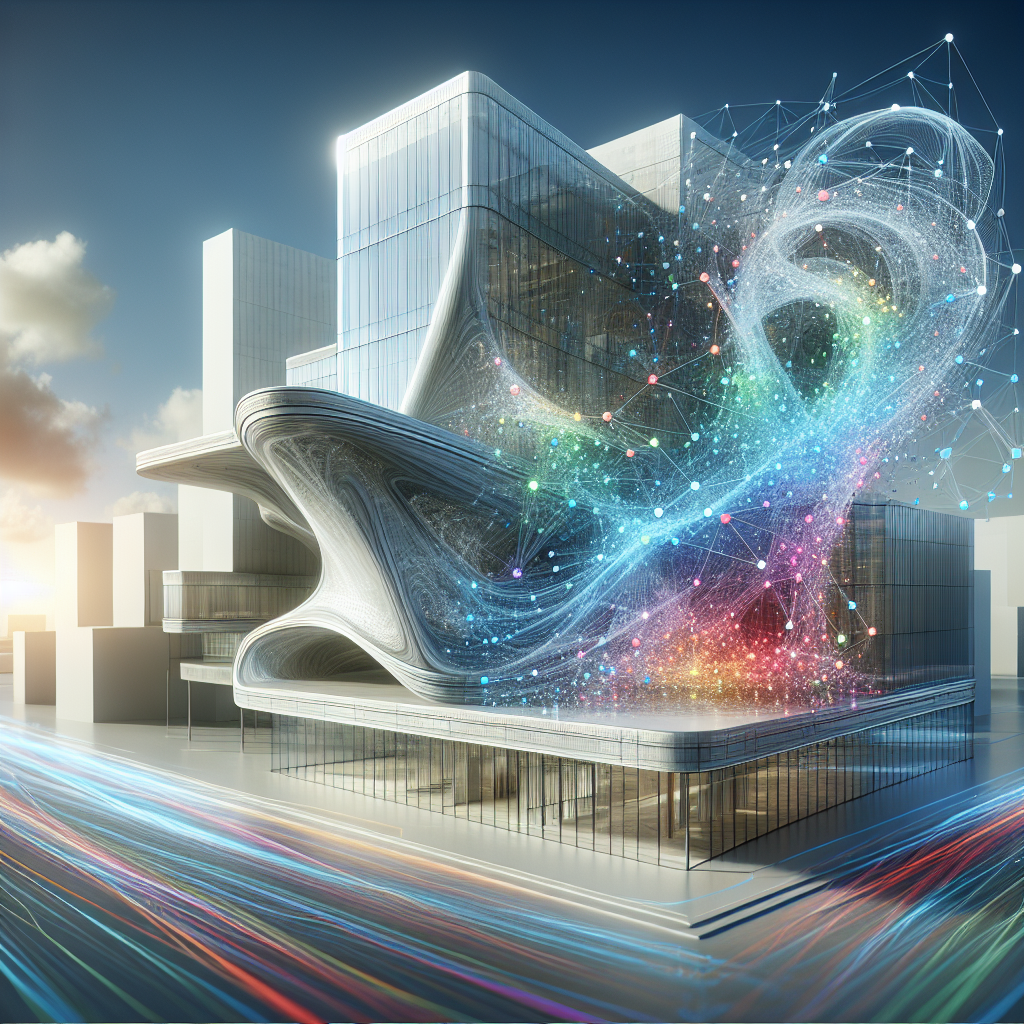Artificial intelligence (AI) is revolutionizing many industries, including architecture. It is changing the way buildings are designed, constructed, and operated, leading to the creation of more efficient, sustainable, and aesthetically pleasing structures. In this article, we will explore AI’s influence on architectural form and function, and how it is shaping the future of the built environment.
AI in Architecture
Artificial intelligence is being used in architecture in a variety of ways, from the design phase to construction and operation. One of the key areas where AI is making an impact is in generative design. Generative design involves using algorithms to explore a vast range of design options based on a set of parameters and constraints. This allows architects to quickly generate and evaluate many design alternatives, leading to more innovative and efficient solutions.
AI is also being used to optimize building performance. By analyzing data from sensors and other sources, AI can identify patterns and trends that can help architects design buildings that are more energy-efficient, comfortable, and sustainable. For example, AI can be used to predict how a building will respond to different environmental conditions, allowing architects to optimize factors such as lighting, heating, and ventilation.
In addition to design and performance optimization, AI is also being used in construction. Robots and drones equipped with AI technology can be used to automate tasks such as site surveying, material handling, and quality control. This not only speeds up the construction process but also improves safety and quality.
Furthermore, AI is being used in building operation and maintenance. Smart buildings equipped with sensors and AI algorithms can monitor and control various systems, such as lighting, HVAC, and security, in real-time. This allows building owners and operators to optimize energy usage, reduce maintenance costs, and improve occupant comfort.
Overall, AI is helping architects create more innovative, sustainable, and efficient buildings that better meet the needs of their users and the environment.
AI’s Influence on Architectural Form
AI is not only changing the way buildings are designed and constructed but also influencing their form. By analyzing data from various sources, AI can identify patterns and trends that can inform the design process. For example, AI can analyze user behavior in a space to optimize layout and circulation, or analyze environmental data to optimize building orientation and form for energy efficiency.
AI can also be used to analyze historical architectural data to inform design decisions. By studying successful architectural precedents, AI can help architects identify design principles and strategies that have stood the test of time and apply them to new projects.
Furthermore, AI can be used to generate complex and organic forms that would be difficult or impossible to create using traditional design methods. By simulating natural processes such as growth and evolution, AI can help architects create buildings that are more responsive to their context and users.
In addition to form generation, AI can also be used to optimize building materials and construction techniques. By analyzing the properties of different materials and construction methods, AI can help architects select the most appropriate options for a given project, taking into account factors such as cost, sustainability, and performance.
Overall, AI is enabling architects to create buildings with more innovative, responsive, and sustainable forms that better meet the needs of their users and the environment.
FAQs
Q: How is AI being used in architectural design?
A: AI is being used in architectural design in a variety of ways, from generative design to performance optimization. AI algorithms can help architects explore a vast range of design options, optimize building performance, and analyze user behavior to create more innovative and efficient buildings.
Q: How is AI influencing architectural form?
A: AI is influencing architectural form by analyzing data from various sources to inform design decisions, generating complex and organic forms, and optimizing building materials and construction techniques. AI is helping architects create buildings with more innovative, responsive, and sustainable forms.
Q: What are the benefits of using AI in architecture?
A: The benefits of using AI in architecture include faster design iterations, optimized building performance, improved construction efficiency, and enhanced building operation and maintenance. AI is helping architects create buildings that are more innovative, sustainable, and efficient.
Q: What are the challenges of using AI in architecture?
A: Some of the challenges of using AI in architecture include the need for specialized skills and knowledge, the potential for bias in AI algorithms, and concerns about data privacy and security. Architects need to carefully consider these challenges when integrating AI into their design process.
In conclusion, artificial intelligence is transforming the field of architecture by enabling architects to create more innovative, sustainable, and efficient buildings. From generative design to performance optimization, AI is influencing architectural form and function in exciting ways. By harnessing the power of AI, architects can design buildings that better meet the needs of their users and the environment, shaping the future of the built environment for years to come.

